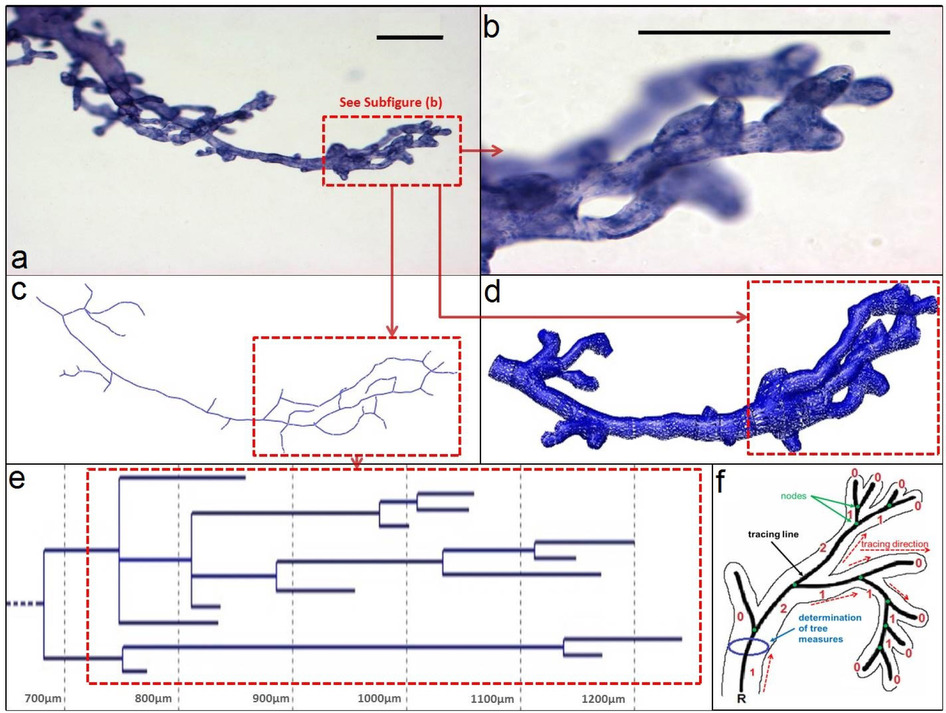
Scientists Use Neurolucida to Create 3D Reconstructions of Placental Villous Trees
When neuroscientists started studying neurons in 3D, it revolutionized brain science. Now, for the first time, scientists are using this same technology to study the human placenta, and they’ve made some fascinating new discoveries about its structure.
Using Neurolucida to create 3D reconstructions of villous trees – three-dimensional structures in the placenta that facilitate gas and nutrient exchange between the fetus and mother – researchers in Munich, Germany uncovered a wealth of information about their architecture.
For the first time, they analyzed the complexity of villous tree branches and branching, determined the number and location of nodes (branching points), and measured branch angles, discovering a surprising correlation between the branching angle of terminal branches and the fetoplacental weight ratio (BW/PW) – a calculation commonly used to measure fetal health in prenatal medicine.
“The results show that 3D analysis with Neurolucida reaches beyond the horizons of 2D histology, the current gold standard in placenta morphology/pathology,” said Dr. Hans-Georg Frank, an author of the study.

(a–e) Example illustrating different graphing options of a three-dimensional data set obtained with Neurolucida software (MBF Bioscience) assisted reconstruction of a whole-mount preparation of a villous tree of a human placenta.
Before now, researchers mainly studied villous trees by analyzing two-dimensional sections of the placenta – a method, which doesn’t allow for the analysis of nodes or branching structure. But the research group found that Neurolucida, which is used to digitally reconstruct neurons in 3D, brings many more details of the branches of the villous tree to light.
In their study, published in Scientific Reports, the research team mounted peripheral villous trees from human placentas onto concave slides, which preserved their three-dimensional structure. Then, they mounted the slides on a microscope connected to a computer. The villous tree specimens were projected onto the computer monitor and researchers used Neurolucida software to digitally reconstruct and analyze villous trees.
According to their results, terminal branches are more structurally diverse than previously thought, varying in length, thickness, and branching angle, but all branches had one common characteristic: they grew thinner and longer as they extended toward the terminal ends and away from the root of the tree.
3D analysis enabled the scientists to classify individual villous tree branches for the first time, by measuring their position in relationship to the nearest terminal end. They also saw that usually two new branches originated from nodes, with an extremely small number made up of three branches (11 of 454 analyzed nodes).
“3D analysis of the structure of placental villous trees should provide an important link between the mechanisms of villous branching and the capability of the placenta to adapt to varying functional requirements during pregnancy,” the authors say in their paper, adding that this knowledge could be used to help ameliorate pregnancy complications like preeclampsia and intrauterine growth restriction.
Haeussner, E., Buehlmeyer, A., Schmitz, C., von Koch, F.E., Frank, H. (2014). Novel 3D Microscopic Analysis of Human Placental Villous Trees Reveals Unexpected Significance of Branching Angles. Scientific Reports, doi:10.1038/srep06192


